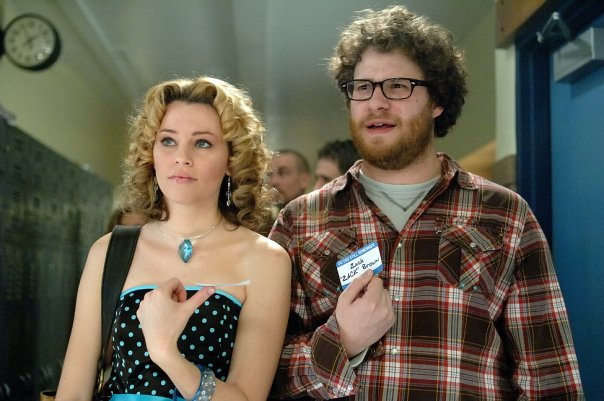By: Wes Lawson
Daily Egyptian
“Four Christmases”
Rated PG-13
Starring: Vince Vaughn, Reese Witherspoon, Robert Duvall, Jon Favreau
Directed by Seth Gordon
Run time: 82 minutes
2.5 out of 5 stars
The only genre more littered with crap titles than horror movies must certainly be Christmas movies. For every “A Christmas Story,” there’s “Deck The Halls,” “Christmas With The Kranks,” and “Fred Claus.” In this decade, 2003 was a good year for Christmas films with the likes of “Elf” and “Bad Santa” but largely, no new Christmas classics have emerged.
“Four Christmases” is no classic, but it certainly isn’t an entirely terrible affair. It’s completely middle of the road Christmas entertainment, and it provides a few decent chuckles, though it certainly could have provided a heck of a lot more.
Brad (Vaughn) and Kate (Witherspoon) are a rather new age couple who don’t want to get married, don’t want kids, and don’t really want anything to do with their divorced parents. Instead of spending Christmas with their families, they spend every year on a tropical vacation, telling their families that they are doing charity work in Africa or something like that. But this year, the San Francisco fog, cancels their flight, and they end up on TV complaining about how much they were inconvenienced. Of course, four different parents in four different houses see them on TV, so Brad and Kate must see all four families over the course of a single day, hence the title. Why these families couldn’t all convene in one place, seeing as they do later on the film, is beyond Brad and Kate’s mental aptitude, but OK.
Movies like “Four Christmases” are completely frustrating because they assemble all the elements for a good comedy and then don’t do anything with them- the film could have been completely fixed with a couple more rewrites. Consider the scene when Brad visits Kate’s mother and they go through a book that showed Kate as a fat girl and a quasi-lesbian when she was younger. We are expected to laugh merely at the fact that she was these things, but it’s not funny to just have personality traits that sit there and do nothing. On the other hand, Kate’s traumatic experience in an inflatable kid’s toy leads to a funny scene where she must confront her fears. The film veers wildly from scenes that are mildly amusing to scenes that just plain don’t work. The four families are all based on stereotypes and only Kate’s mother is really amusing, since her entire family wants to date Brad.
It also doesn’t help that Vaughn and Witherspoon are horribly miscast as a couple. Vaughn’s persona is based on wild improvised tangents, and he needs someone to play off of. Witherspoon is largely cute and funny in movies like this, but she sticks to the script. To watch Vaughn go off on his tangents while Witherspoon stands like a deer caught in the headlights is desperately unfunny, and though both of them get good lines, one or both of them needs a different partner. Vaughn and Elizabeth Banks would have been a home run.
The film takes place at Christmas, but there’s very little Christmas cheer. It’s only about 80 minutes long, so none of the characters are really developed, but aside from the Christmas setting and the family visits, there’s not much that makes this different from every other romantic comedy released in the last few years. Sure, there’s some humor along the way, but none of it has anything to do with the season, and that’s certainly a missed opportunity.
Seth Gordon, the director, previously made the superb documentary “The King of Kong,” and to watch him be saddled with such generic material is upsetting. Ultimately “Four Christmases” is a movie that was designed at a studio meeting where they thought all these elements could be funny, but didn’t bother to read the final product to see if anything actually turned out to provide more than half-hearted chuckles.







